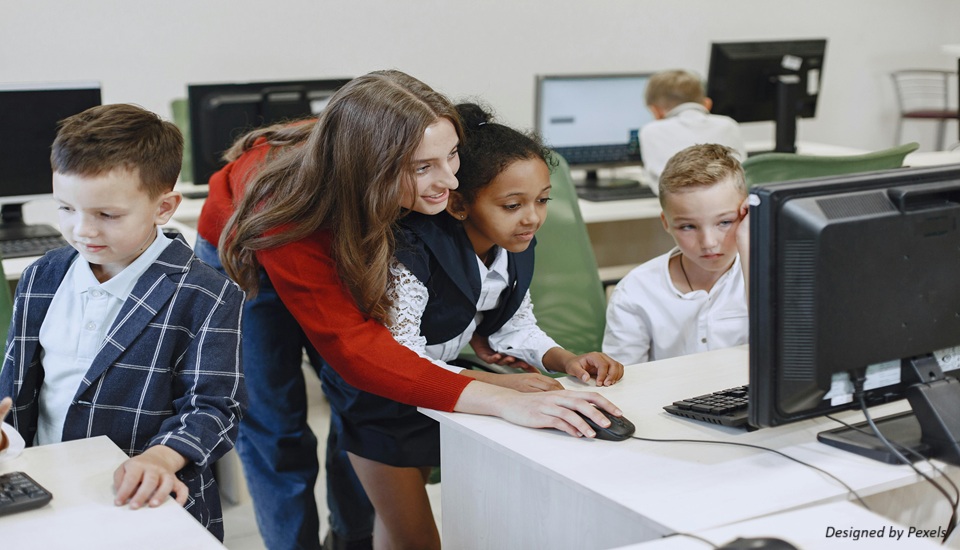The Role of Wearables and Biofeedback in Special Education Classrooms
31st October 2025

In the world of special education needs (SEN), emerging technologies are presenting fresh possibilities to support self-regulation and emotional control. Educators who enrol in International Special Education Courses are discovering how wearables and biofeedback systems can help learners monitor their physiological states, recognise triggers, and build greater autonomy. When used thoughtfully, these tools don't replace human support—they extend capacity, giving educators and students real-time insights that enhance self-regulation and engagement.
The Promise of Wearables and Biofeedback in SEN Contexts
Wearable biosensor technology—devices equipped with physiological sensors such as electrodermal activity (EDA), heart-rate variability (HRV), and motion detection—has gained significant traction in educational research. A recent systematic review analysed 10 years of use in educational settings and found that such technology supports learning by measuring stress, cognitive load, and attention.
In the SEN sector, many learners struggle not just with academic content but with regulating their attention, emotion, and behaviour. Research shows that using assistive technology for SEN students, like wearables and biofeedback interventions, can provide scaffolding for co-regulation and gradually shift toward independent self-regulation.
By introducing devices that give immediate feedback (vibrations, visual cues, haptic alerts), educators can help learners become aware of internal states (e.g., elevated heart rate, increased skin conductance) and respond with taught strategies (breathing, movement breaks, grounding). This layered approach—technology plus pedagogy—holds promise for meaningful change in SEN settings.
How Technology Supports Self-Regulation
To understand how wearables and biofeedback support self-regulation, it helps to unpack the mechanisms:
- Physiological Awareness
Many learners struggle because they are not aware of when their body and emotional states escalate. Wearables capture signals (EDA, HRV, respiration) and translate them into actionable feedback. For example, devices might alert when sympathetic arousal increases—effectively signalling "you're in stress mode."
- Biofeedback Loop
Biofeedback involves giving users real-time information about their physiological functions, enabling them to learn control. In an SEN classroom, this means learners can see when their attention is drifting or when they are overstimulated, and apply strategies taught by educators.
- Scaffolding Transitions
In early stages, learners might co-regulate with teacher oversight (the teacher responds to alerts, prompts a break). Over time, students move toward independent regulation. Studies with smartwatches for ADHD children illustrate this progression.
- Data-Driven Reflection
Teachers can use the data collected by wearables to monitor patterns—when attention dips, which tasks trigger arousal spikes—and adjust instructional design, environment, or individual supports accordingly. This feedback loop creates a responsive learning environment.
Practical Applications in SEN Environments
How do these technologies play out day-to-day in classrooms or specialist settings?
Here are several use-cases:
- Smartwatch Alerts for Transition Times
Transition moments (moving from one activity to the next) can trigger anxiety or dysregulation. A smartwatch vibration can alert a student ahead of transition, prompting a brief breathing exercise or visual cue. Over repeated uses, the student begins to anticipate and self-regulate.
- Biofeedback Boards and Visual Displays
In a sensory-friendly space, teachers may set up a display that shows class-level arousal metrics (e.g., class average HRV). If the display signals rising arousal across the group, teachers might pause, lead a mindfulness or movement break. It becomes a classwide self-regulation tool rather than only individualised.
- Individual Intervention for Specific Needs
For a learner with emotional dysregulation, a wearable can trigger a private prompt—“Take three slow breaths"—and pair this with a task such as sensory weighting for 30 seconds. The teacher monitors the wearable data trend retrospectively and adjusts support accordingly.
- Integration with IEPs and Specialist Programs
Wearables that record self-regulation metrics can be integrated into individual education plans (IEPs). Educators analysing sensor data can show progress not only in academic tasks but in regulation, engagement, persistence, and behavioural control—key factors in SEN outcomes.
Benefits and Evidence of Impact
The research base is growing. According to the 2023 systematic review of wearables in education, there is strong evidence that devices measuring physiological responses can support self-regulation and attention in learners.
In interventions specifically targeting neurodiverse learners (ADHD, autism spectrum), smartwatches designed for co-regulation have shown positive outcomes in emotional regulation and reduced outbursts.
For SEN settings, key benefits include:
- Increased Awareness And Agency
Learners become aware of their internal states and begin to respond proactively.
- Reduced Reliance On Teacher Prompts
As students self-monitor, the teacher can shift toward facilitating rather than intervening constantly.
- Data-Informed Adaptation
Teachers gain fine-grained insight into when learners struggle—not just academically, but physiologically and behaviourally.
- Engagement And Persistence
When learners feel supported in regulation, they are more able to engage meaningfully with tasks, reducing avoidance or shutdowns.
Bottom Line
Technology offers a powerful pathway toward enhancing self-regulation in SEN settings—but success depends on thoughtful design, ethical practice, and aligned pedagogy. For those pursuing professional development, tools like wearables and biofeedback systems become part of a modern toolkit. Educators equipped through International learning disability courses will be better prepared to integrate these innovations into inclusive practice. By embracing this shift, we move toward classrooms where learners not only access education but also regulate, engage, and thrive.
Written By : Park Jin Ae

